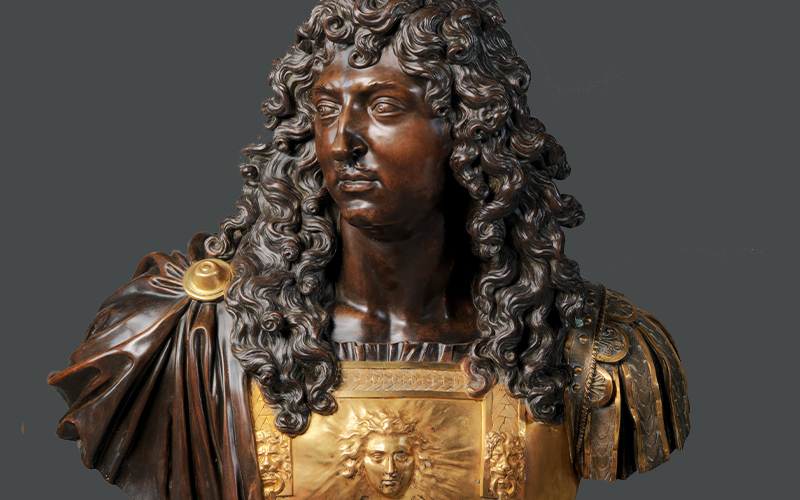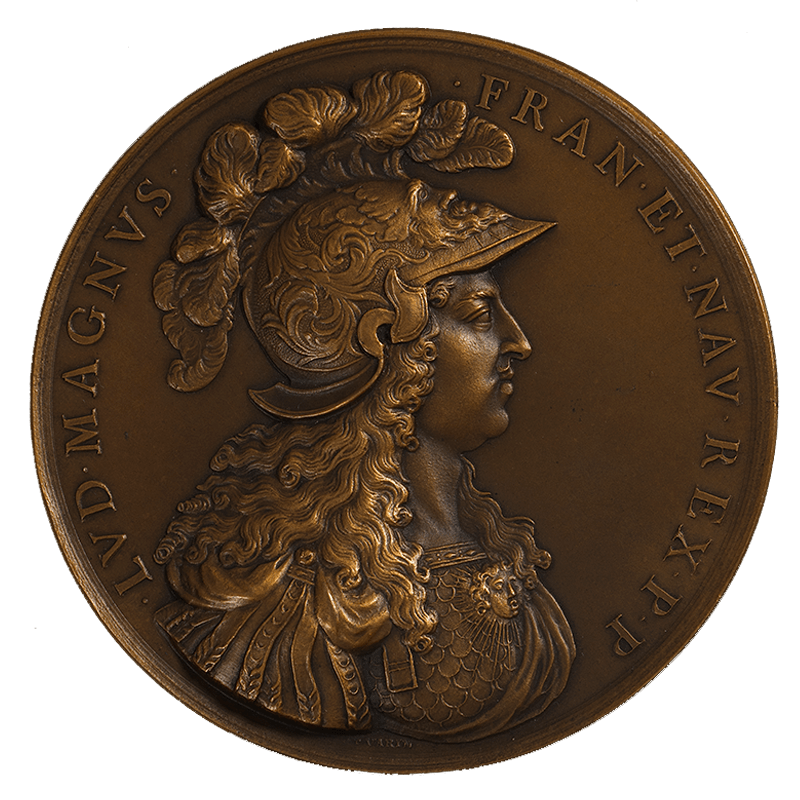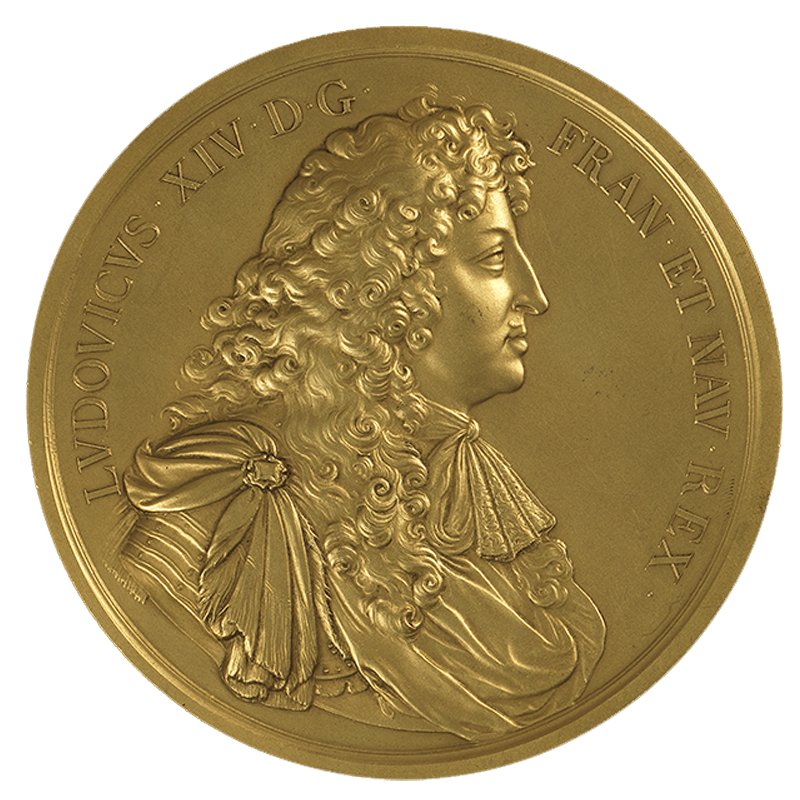Louis XIV

Louis XIV (1638–1715) was King of France and Navarre for 72 years, the longest reign in Europe. Known as the ‘Sun King’, he inherited the throne when he was only five years old, following the death of his father, Louis XIII, definitively assuming his place – occupied until then by his mother as Queen Regent – after his thirteenth birthday.
During his reign, France adopted a political system in which power was centralised in the capital and the country became one of the main European powers. Surrounded by some of the most important names in the political, military and cultural spheres, the King invested heavily in the French military, making it one of the most powerful on the continent. His reign experienced three major wars and several smaller conflicts.
Louis XIV also had a significant impact on the arts, funding writers, like Molière and La Fontaine; decorative and visual artists, including Boulle, Coysevox and Rigaud; and musicians, such as Lully. He also founded the Royal Academy of Dance and the Academy of Opera and ordered the construction of the Palace of Versailles.
Consequently, the King was portrayed by various artists, such as Bernini, who produced a marble bust, currently on display in the Palace of Versailles. Similarly, Alexandre Dumas referred to Louis XIV in his famous work The Three Musketeers: the third part of the book recounts the legend of the twin brother of the King, a prisoner forced to wear an iron mask, which gave rise to various film adaptations. Over the years, the King has featured as a main character in other films, books and television series.
Louis XIV was a controversial figure, often remembered for his vanity. He lived longer than the majority of his direct family, dying shortly after his 77th birthday. The King was succeeded by one of his great-grandsons.
In 1927, Calouste Gulbenkian acquired a bust representing the ‘Sun King’ dressed in Roman attire, inspired by a statue at Versailles by Jean Warin (1596 or 1604–1672) and is displayed in the Museum, in the gallery dedicated to eighteenth-century decorative arts.


The collector also acquired two medallions with Louis XIV’s portrait, two reeditions produced by the Parisian Mint. The king is represented in profile, with the usual voluminous wig and a small moustache, wearing an armour. In one of the medallions, he also wears a feathered helmet.
A Collection of Stories
On a weekly basis, we shared a story around Calouste Gulbenkian’s collection. This section was created in 2020, which is why the articles refer to the Calouste Gulbenkian Museum collection as the Founder’s Collection.
Other stories